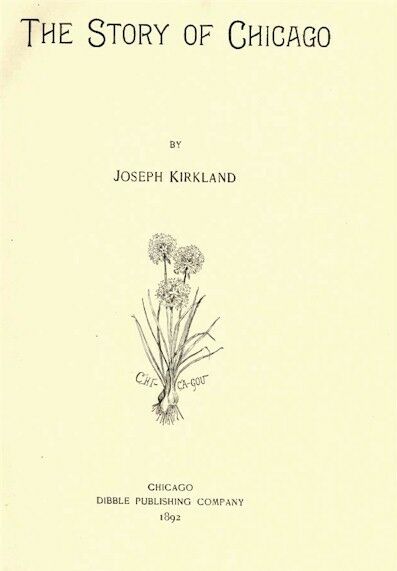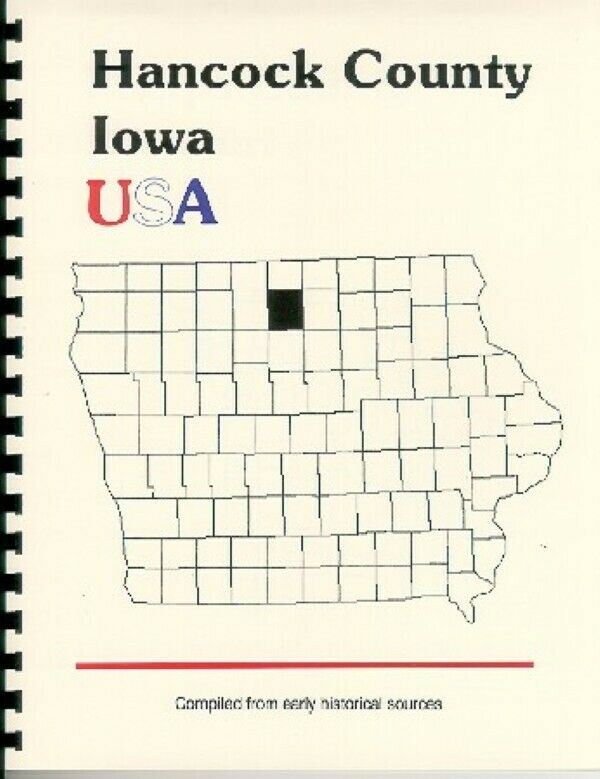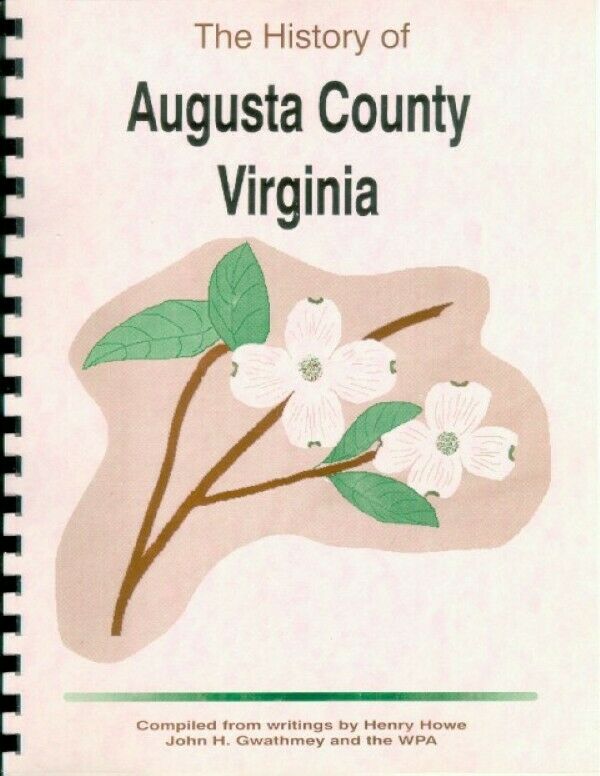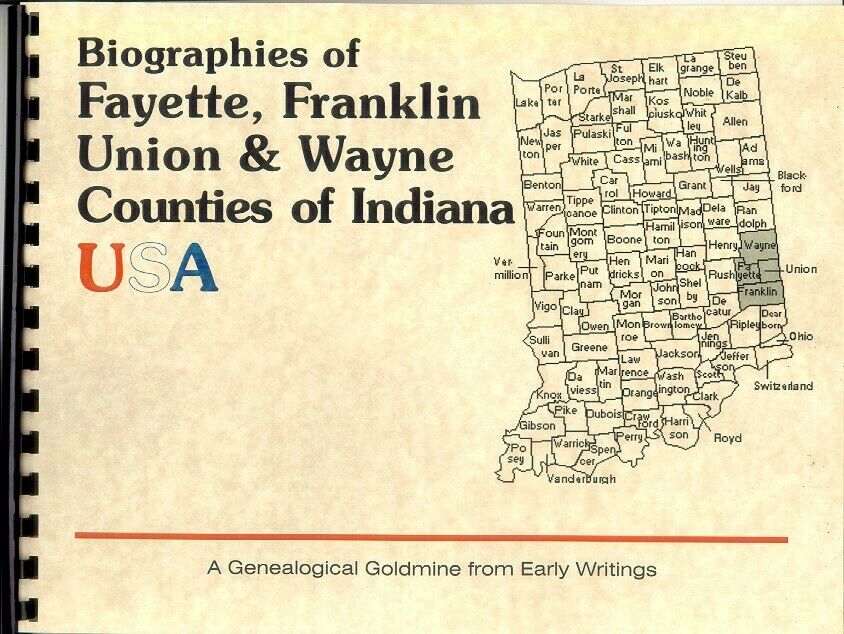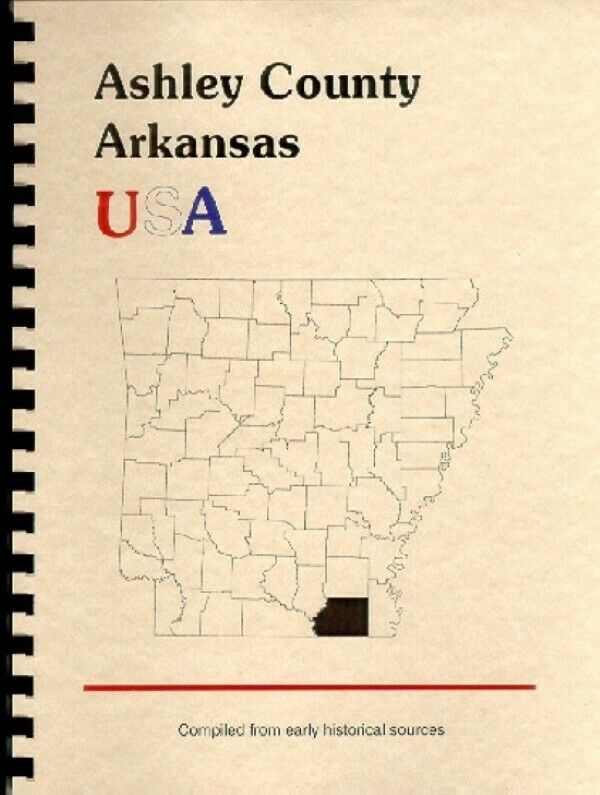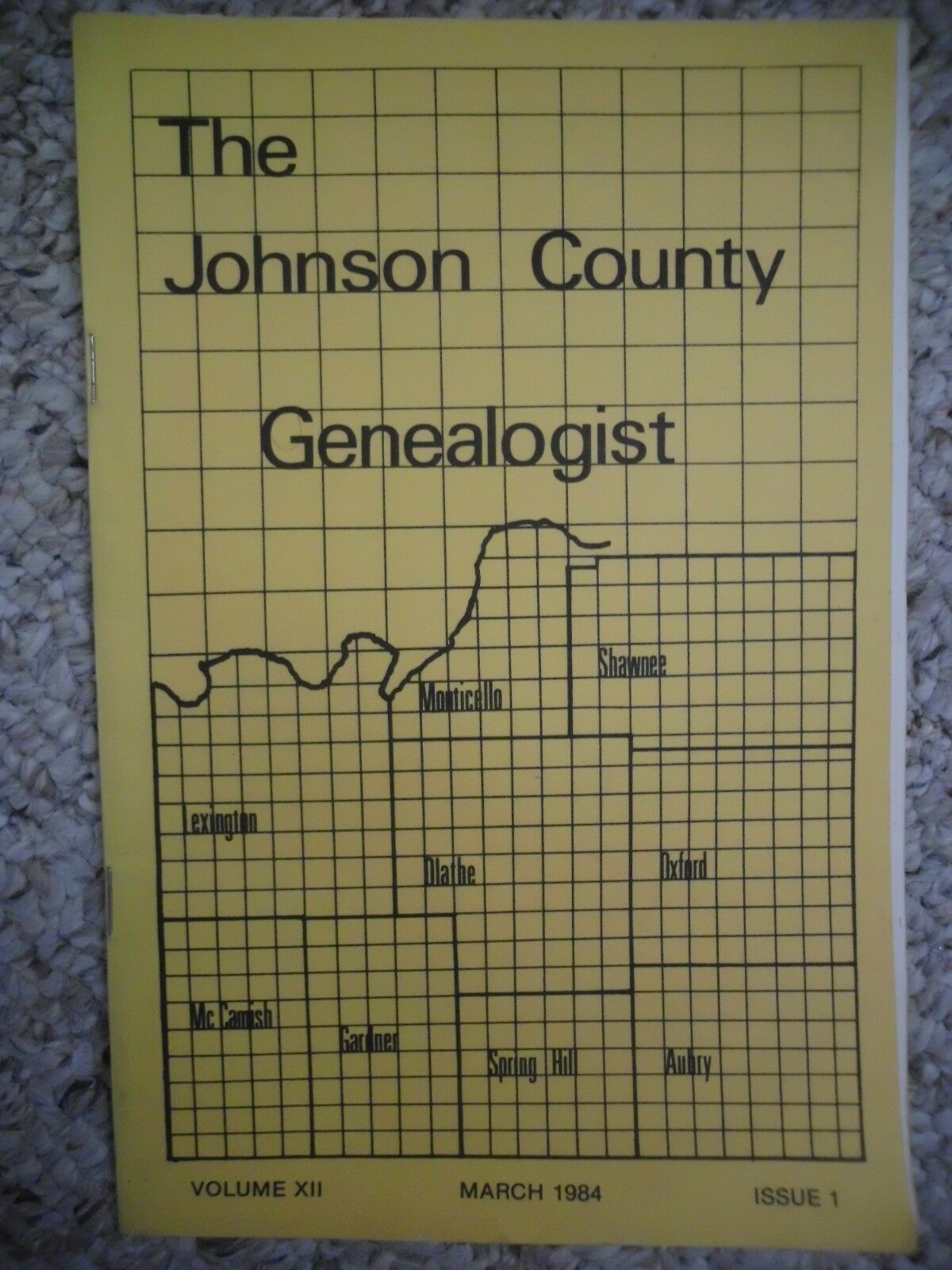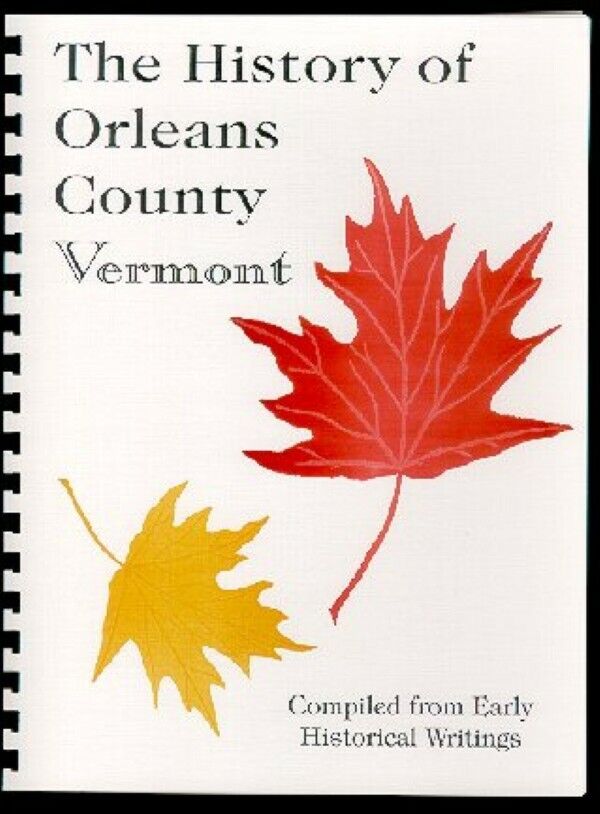-40%
Story of Chicago Kirkland Illinois IL genealogy history
$ 5.01
- Description
- Size Guide
Description
The Story of ChicagoOriginally published, Joseph Kirkland, Dibble Publishing Co., Chicago, 1892, 536 pp
This is a reproduction on CD and is searchable.
This volume contains 36 chapters dealing with Chicago and is illustated with photos of citizens & the city. See below for the listings from the table of contents.
About the CD:
This CD provides the genealogist the opportunity to have access to information from a book that is difficult to locate in the used book market. The CD was made by scanning an original copy of the book. Any defect such as notes in the margin or light text will also appear in the CD version. The CD requires Adobe Acrobat Reader to view the file and the Windows version is included with the CD. The Mac & Window readers can also be downloaded from the Adobe website. The information on the CD can either be printed and read in the traditional manner or viewed with your computer. When viewing on your screen the page size can be increased to make reading easier. This CD is searchable and has a series of bookmarks making navigation through the file easier. The CD is packaged in a projective sleeve.
Terms:
Shipping and handling for US buyers will be .50 (first class USPS) priority postage can be arranged. Multiple purchases will be combined with a savings in shipping. Non US buyers, I will gladly ship world wide with international first class being my first choice. Please inquire about the shipping rate. Illinois buyers will be charged IL sales tax. Payment can be made by approved EBay methods.
If you are interested in books of genealogical interest examine the Ebay Store of
Madigan's Books
to view other genealogy and local history books & CDs.
Examine my
About Me
page to
Learn more about me.
Link to view our inventory of out of print and used genealogy books.
Link to view our inventory of over 2400 books on CD.
TABLE OF CONTENTS
CHAPTER I.
A
Thousand Centuries:
Lake Michigan flowed toward the Gulf of Mexico; 1 pHow the
waters came to change direction; 2 Threatened destruction of Lake
Erie; 3When Chicago was submerged; 4 Aspect of the ancient
shore line; 5 The divide emerges from the waves; 6 Vanished
races; 7.
CHAPTER
II.
The Aborigines; God's Image done in Copper:
Meaning of the name Chicago; 8 The Portage; 8 Indian Traits;
10 John Dean Caton; 11 Scalp Hunting; 12 Massacre at Starved
Rock; 13 Lost Records; 14.
CHAPTER
III.
The Recorded Story Begins:
Coming of the French; 15 Race of the Races; 17 Joliet
discovers the Portage; 18 Marquette's winter at Hardscrabble; 18
La Salle arrives; 19 Travelers'tales; 20 Knightly honor assailed; 21
First lake vessel; 21 La Salle's ceaseless struggles; 22 Final catasÂ
trophe; 23.
CHAPTER IV.
A
Single Century:
Last days of first explorers; 26 Kaskaskia in the North; 27 Kaskaskia in the South; 28 John Law's Mississippi scheme; 29 New road to the sea; 30 Indian atrocities; 32 Chicaguafor a Rendezvous; 32 English succeed French;
2ij-
CHAPTER V.
Illinois and Chicago during the Revolutionary War:
Red Coat
1812;
34 England's savage allies; 34 Kinzie and Cly-_bourne ancestors; 35 Kentuckians in Illinois; 36 Clark takes KasÂkaskia; 37 Chicago from 1778 to 1794; 39 Hamilton takes Vin-
cennes; 40 Clark's Winter march; 41 Clark defeats and takes HamÂ
ilton; 42 Anecdote about Clark; 43 Todd our first Governor; 44.
viii
THE STORY OF CHICAGO.
CHAPTER VI.
The dawn ok the day we live in:
The Washingtons buy land; 46 William Murray tries to buy ChiÂ
cago; 47 Chicago's first squatter; 47 Pointe de Saible and Guarie;
48 Antoine Ouillemette (Wilmette); 48 Ordinance of 1787; 49 Captain John Whistler; 50 Major Whistler; 50 Julia Ferson Whistler; 51 Old Rush Street Rope Ferry; 52 Quiet years from 1S04 to 1812; 53 Double murder at Hardscrabble; 54.
CHAPTER VII.
The Cloud, cone-shaped and copper-colored:
Trouble far away; 56 Trouble close at hand; 56 Capt. Heald's dilemma; 57 Bad blood in the Garrison; 58 Indian Council; 59
Heald's decision and action; 60 Brave William Wells arrives; 61
View from the roof of the Block-House; 62 The same spot 80 years later; 63.
CHAPTER VIII.
Battle and Murder and Sudden Death:
Flag of distress; 64 John Kinzie's course; 64 Line of March; 65
Chart of Chicago in
1812;
65 The Boat Party; 65 Indians attack the train; 66 How all might have been saved; 66 Mrs. Helm's story
and its difficulties; 67 Private Jordan's story; 67 Capt. Heald's letter, 68 Killing of Wm. Wells; 68 What Nile's Weekly Register reported; 69 Tortures of dying prisoners; 69 Fate of survivors; 70 The MasÂ
sacre Tree; 71 Last leaves on the old tree; 71.
CHAPTER IX.
They made a Solitude and called it Peace:
John Wentworth's discoveries; 72 Capt. Heald's Son; 73 The
Heald side of the story; 73 Hon. Darius Heald in 1881; 74 Fables
attributed to Mrs. Helm; 74 Tradition handed down by A. H. Edwards;
76 Sauganash to the rescue; 76 The Kinzies after the battle;
jj
From 1812 to 1816, Desolation; 78.
CHAPTER X..
After Darkness, Light:
Years following the Massacre; 79 Early suggestion of Ship Canal; 80 Rum and the Fur Trade; 81 Slow growth for many years; 83 Gurdon Hubbard's early experiences; 84 General Cass' Treaty for
ix
CONTENTS.
Michigan lands; 86 Aspect of North Side from 1816 to 1830; 87
Kinzies and their home; 88 Winnebago Scare and Danville VolunÂ
teers; 89 The last of John Kinzie and the Old Homestead; 90.
CHAPTER XI.
1820-30,
an Obscure Decade:
The unpromising state of things sixty years ago; 92 Wild game within city limits; 94 The Kinzie race; 95 Less known early names;
95 Descendantsof the captive girls; 97 TheClarksandClybourns; 98
The Beaubiens; 99 Original capitalists; 100.
CHAPTER XII.
The Vanishing Race:
Treaties with the Sauks and Foxes; 102 The Black Hawk War;
104 The last Chicago Indian Treaty; 105 How Chicago looked to
a stranger; 106 White men's interest in the Treaty; 107 The last of
old Shaubena ; 108 The Farewell War dance in 1835; 110 Present
state of the same tribes ; 111.
CHAPTER XIII.
Very Hard Work:
Beginning of the Illinois and Michigan Canal ; 11 2 Persistence
under difficulties ; 1 1 3 Original Town surveyed ; 1 1 4 Sale of the
School Section;
116
Ferriage;
118
Clark Street Bridge
built;
120.
CHAPTER XIV.
The Keel Laid:
Schools and Teachers;
122
Protestant Churches;
124
VolunÂ
teer Fire Company;
125
Catholic Worship ;
127
St. James Church;
128
Postal Service;
129
The first Newspaper; 130Medical PracÂ
titioners; 131 Cholera of 1832; 131 Refugees from the Fort; 132
The first lawyer; 133.
CHAPTER XV.
Not At All Hard Work:
Pianos arrive; 135 Music; 136 Social Gaiety, 137 Kinzie-
Whistler wedding; 137 Scanty of food in 1834; 138 Dances and
prayer meetings; 139 Unfathomable mud; 140 Experiments in street pavement; 140 Changes in established grade; 141 Earliest Public Exhibition; 141 Field ..sports;
142
Primitive Postal service; 143 William B. Ogden; 144 Personal memories of the Ogden home; 145 Arnold's ride to Danville; 146.
x
THE STORY OF CHICAGO.
CHAPTER XVI.
Fairly Launched
:
Estray Pen and Jail on Public Square; 149 John Dean Caton's admission to the Bar; 150 The first Town Census of Chicago; 152 Launch of the Clarissa; 153 Garrison finally withdrawn; 154 Bogus Towns and Cities; 156 Traditional city lot sales; 157 Progress of the excitement; 158 Balestier's lecture on these times; 160 Foolish State legislation; 161.
CHAPTER XVII.
The Hard Times Of
1837-40:
Legislative scheme of Public Improvements; 163 Wisdom of Gov. Duncan; 165 Specie payments suspended; 165 Public works stopped; 165 Banks fail; 166 State Treasurer too poor to pay postage; 166 State debt and assets; 166 Canal cholera; 167 Personal reminiscences; 167 " Red dog," Wild-cat " and " Shin-plasters "; 168 Scrip of various kinds; 168 Struggling to keep faith; 170 Utter failure of Internal Improvement scheme; 171 Ogden's firmness; 172 Position of Chicago
Branch State Bank; 172 Stubborn business courage; 173 Where
men used to congregate, 173 Real Estate values; 174 Cost of living; 1 74 Collection of small debts; 1 75 Not all bankrupt, 176
" Wigwam lost, Mokopo here!" ; 176.
CHAPTER XVIII.
Never Say Die:
Delegation to Whig convention at Springfield; 178 Reviving conÂ
fidence; 179 Alleged row between Long John and Captain Hunter;
180 Stage-coach days; 181 First regular Theatre; 181 Cemetery at
Clark Street and North Avenue; 182 States emerging from their
troubles; 182 Boston Capital; 183 Canal commissioners appointed; 184 Shallow cut adopted; 184 Wisconsin tries to gain Chicago; 184 The Canal's many benefactions; 185 The story of a typical family
migration; 187 Achievements of "the forties"; 189 The Lake
Street hydraulic works; 189 Primitive water-piping; 190.
CHAPTER XIX.
River and Harbor Convention:
The Mexican War; 191 Previous River and Harbor bills; 192
Polk's veto; 192 Chicago furious; 193 Calling of the Convention
194 Strangers in attendance; 195 Lincoln a Delegate; 196 Horace
CONTENTS.
xi
Greeley; 196 Thurlow Weed's account; 197 The Resolutions; 198 Weed's mistake; 199 General Webster; 199.
CHAPTER XX.
Land-Travel and Water-Travel:
Opening business on the Canal; 201 The first engine that ever
turned a wheel in Chicago; 202 The "Pioneer;" 203 Running a railÂ
road line through the water; 203 Galena railroad begins to run; 204
,000 from George Smith; 205 High water all over the West; 205
The old Portage overflowed; 206 The. great flood of 1849 '
n
ChiÂ
cago; 206 Accidents and incidents of the flood; 207 Losses; 207
A costly bridge; 209 Rush Street Ferry; 209 The great drawbridge
question re-opened;
210
First City Hall built in State Street;
211
First Regular Theatre;
212
Mr. McVicker in song and dance act;
213
Beginning of the City's Musical Life;
214
Ogden's lesson to Prin-
diville; 214 Gov. Bross' description of those days; 215.
CHAPTER XXI.
The Coming Power:
Chicago's struggles in starting the first railroad; 216 Bad faith in dealing with Galena; 21 7 Michigan Southern and Central come in;
217
Terrible accident at Grand Crossing; 218 The Illinois Central; 218 State percentage of Illinois Central earnings; 219 Mr. Lincoln's little
story; 219 Threatened destruction of Michigan Avenue; 220 The
line of Crib protection;
221
Foreign capital to the rescue;
221
The makers of the Illinois Central; 222 Streets generally begin to be numÂbered and paved; 222 Burning of Rice's Theatre; 223 First General Charity Hospital; 223 Douglas silenced by Anti-Fugitive Slave-Law
mob; 224 Sale of a black man at auction; 225 Rescue of fugitive
slaves; 225 Distinguished Abolitionists; 226.
CHAPTER XXII.
•The City Comes to Herself:
Nature's bounty to Chicago; 227 Her commercial position; 227 Built of material taken from her own sub-soil; 228 Lake breezes temper both cold and heat; 228 Drawbacks of a level site; 229 Drainage, water, river, fire and streets; 229 Chowder in the bath-tub; 230 Line of drainage established; 230 First effects of Drainage;
231
The city lifted above the sewers; 231 Law of street grades fixed; 232 Raising of old brick buildings; 232 First work of George Pullman; 233 BeginÂning of Palace Cars; 233 The Sleeping Car System; 234 The Cholera;
xii
THE STORY OF CHICAGO.
1852 to 1855; 234 Incidents of the epidemic; 235 Dr. Dyer's good story; 235 The Lake Street Fire of 1857; 236 The first Steam Fire
Engine; 236 Riotous Firemen; 237 Fate of the river banks; 237
River and Harbor History; 238.
CHAPTER XXIII
The Stump-Tail Chimera.
Banking and Currency system a failure; 242 Chaos of Bank notes; 243 One day's collections on the C, B. & Q; 243 The hard-money
"Democrat;" 244 Periodical Convulsions; 244 Ohio Life & Trust fails for ,000,000; 245 Tribulation of the Illinois Central; 245
Hard times come again; 246 Gresham's Law; 246 Illinois Banking and Currency act; 247 Geo. Smith and the Georgia Banks; 247 ChiÂcago on the Slavery Question; 248 Free Kansas meeting in 1856; 249 Injustice to Justice Taney; 249 Lincoln-Douglas Debates; 249
Douglas' strong Unionism; 250 Chicago under cloud and storm; 250
Beginning of Street Railroads; 251 Disappearance of Fort DearÂ
born; 251 First iron drawbridge; 252 Railroad miles and earnings in
1857; 253 Union Stock Yards started; 254 Progress in the fifties;
255 Birth of the Republican party; 255 Wreck of the "Charles
Howard;" 256.
CHAPTER XXIV.
To
Arms, Ye Brave
!
Republican Convention of 1861; 257 Sewardandthe New Yorkers; 257 Lincoln on his own candidacy; 258 Seward's chances and misÂchances; 258 Scenes in the Wigwam; 259 The balloting; 260 Union mass-meeting at Bryan Hall; 260 Only 150 militia men in i860; 261 First call for volunteers; 261 12th and 19th Regiments; 262 23d, Irish-American; 262 Hecker-Jaeger Regiment; 262 24th, German-American; 264 37th, Fremont Rifles; 264 39th,Yates Phalanx; 264 42d, Infantry; 264 51st, Chicago Legion; 264 57th, National Guards; 264 58th McClellan Brigade; 265 65th, Scotch Regiment; 265 72d, Board of Trade; 265 82d, German-American; 265 88th, Second Board of Trade; 266 89th, Railroad Regiment; 266; 90th, Irish Legion; 266 113th, Third Board of Trade; 266 127th, 3,000 miles, 100 engagements; 266
Cavalry; 266 16th and 17th Cavalry; 267 Artillery; 267 Stokes
Board of Trade Battery; 267 Death-Roil of Honor; 268 Typical
Memoir of one Chicago officer; 268 Camp Douglas; 269 Prisoners' Aid and Relief; 270 Camp Douglas Conspiracy; 270 Sanitary ComÂmission; 271 Love and Gratitude of those old days; 271.
CONTENTS.
xiii
CHAPTER XXV.
The Sixties at Home:
Loss of the Lady Elgin ; 272 The bones of the ship now visible 273 Other wrecks; 273 Population not checked by war; 274 Lake
Tunnel crib; 274 Lake difficulties overcome, 275 Beginning of
Lincoln Park; 276 Sectional jealousies; 276 Removal of the cemÂetery; 277 Enlargement of the River Forks; 277 Inception of the Union Stockyards; 279 Of the Clearing House, 279 The river again foul; 280 The remedy; 280 The two tunnels; 281 Federal affairs ; 281 Greenbacks; 281 Money that rustled but did not rattle; 283 The old banks died hard; 283 Unfailing value of city securities; 284 Farewell to George Smith ; 284 Where did the old rags go ? 285 Greenback inflation; 285 Laborers on top ; 285 End of the stormy sixties; 287 Delusive confidence; 287.
CHAPTER XXVI.
The Great Fire
:
The great drought before the great fire; 288 Condition of the
city in 1871; 288 The feast spread; 289 Condition of the fire departÂ
ment; 289 The O'Leary house and stable ; 290 Testimony of the
O'Learys; 291 Delay in giving the alarm; 291 The attack outflanks
the defence; 291 First loss of a steam fire engine; 292 Flames jump
over the south branch; 292 Battle on the court-house roof; 293 Use of gunpowder; 293 Cook county record office; 293 Fierce speed of
the flames; 293 Fire crosses the main river; 294 Failure to defend the
waterworks; 294 Whose fault? 295 One woman's story; 296 MenÂ
tal phenomena; 297 Pitiful struggles; 298 Outpouring of the world's pity; 298 First relief committees; 299 The Chicago Relief and Aid
Society; 299 Special police sworn
in;
300 Militia and regular troops
come; 301 Sensitiveness regarding U. S
s
soldiers; 301 First new
supply of water; 301 Summary of losses and compensations; 302
Rebound of hope; 302 Even Gov. Bross underestimates the recovÂ
ery; 302 One man's recollections; 303 How the streets looked to a
newly arrived Chicagoan; 304 Particular ruins; 304 North Side desÂ
olation; 305.
CHAPTER XXVII.
A
New Story ok the Fire:
Books about the fire; 306 Fate of the county records; 307 American Record System; 307 Maps and plats of city property; 308
xiv
THE STORY OF CHICAGO.
The abstract makers and their work; 308 The real estate dilemma;
309 A clue to the labyrinth; 310 John G. Shortall's story of a
night; 310 Fate of an old landmark; 311 First apprehension of
the coming catastrophe; 311 The fugitive crowd;
312
Lucky failure of a well-meant effort;
312
Stocktons to the rescue; 313 Books on
the truck and rain of fire on the books; 313 The great bell falls unheard;
314 Help of the jail-birds; 314 Back again to the fire; 314 ExasÂperating fatality; 315 Exhausted nature breaks down; 315 The loss averted; 316 The combined savings; 316 Chance for extortion; 316 Honorable conduct; 31 7 Chicago worthies; 318 Accumulations since
the fire; 320 Government weather-signal officers; 320 Interview with ex-Mayor Cregier; 321 Interview with Chief Fire Marshall Williams;
321.
CHAPTER XXVIII.
Derrick Time
:
Splendid conduct of Insurance Companies; 322 Trepidation of
the timid; 322 The Burnt Record Act; 323 Words hearty and timely;
323 Buildings put up by the R. & A; 323 Doubts all proved to be
vain; 324 Mayor Medill and the city problem; 324 Fire limits
extended; 325 How serious is the loss of old buildings? 326 Early
reconstruction; 326 Civic finances and their prospects; 327- -Schneider's
saying about metropolitan securities; 327 Timely liberality of the
State Government; 328 The Rookeries, old and new; 328 UnparalÂ
leled achievement of the city; 329 Kerfoot's Block; 329; Gradual
clearance of the obstructed streets; 330 Rehabilitation of the newsÂ
papers; 330 Failure of Congressional efforts at relief; 331 All poor,
busy, hopeful and economical; 331 Relics of the Court House fire;
332 East-bound trains; 332 The blessed mother-in-law; 333.
CHAPTER XXIX.
Social Re-organization
:
Thirty-nine churches burned; 335 Scattering of Congregations
by the Fire; 335 North, South and West Side circles; 335 HospitalÂ
ity and Benovolence; 336 None rich by inheritance; 336 Absenteeism
not favored; 337 One circle in the far future; 337 No true AristocÂ
racy in Chicago as yet; 338 Development of Clubs; 338 The
Chicago, the Standard and the Fortnightly; 339 The Literary; 340 The Union; 340 The Illinois; 340 The Union League; 340 The
Iroquois; 341 Relief and Aid Society; 341 Its most devoted servants;
342 Home for the Friendless; 342 Nursery and Half-Orphan AsyÂ
lum; 342 Old Ladies' Home; 343 Historical Society; 343 The
CONTEA'TS.
xv
Athenaeum; 344 Young Men's Christian Association; 345 Humane
Society; 345 Secret Societies; 346 Union war Veterans; 346 The Art Institute; 346 Chicago as an art centre and art market; 347 A
glance back at a primitive time and place; 348 The Declaration of Independence read from a pocket-handkerchief; 349.
CHAPTER XXX.
Panic of
1873.
Fire of
1874.
Whisky Ring:
One bank safe failed in its duty; 350 Consternation first and delibÂeration next; 350 Banks begin again to pay out money; 351 StrinÂgency two years later; 351 Clearing-house certificates not used; 352 Collapse averted; 352 Failures; 352 Food products a better financial basis than stocks and bonds; 353 The great savings-bank disaster; 353 State, Bee-hive, Fidelity and German Savings-Banks; 354 Building Societies and their mission; 354 Relics of the past made foundations of the future; 355 A new blow on the old sore spot; 355 Last straw on
the backs of the Insurance Companies; 356 Citizens' Association to
the rescue; 356 The companies forgive but do not forget; 356 The
new army of fire-fighters; 357 Bursting of the Whisky Ring; 357
Let no guilty man escape; 357 Enormous seizures of property; 358 Sensational trial, verdict and sentences; 358 Strongmen broken down;
359 Indemnity to "Squealers"; 359 Seeming financial disaster, but
real return of health; 359 Uniform integrity of the Mayors of Chicago;
361.
CHAPTER XXXI.
The Beauty Spots:
The luxury of the poor and the rich; 362 South Park Commission; 363 Its Fire losses; 363 Early purchases and improvements; Drexel
Statue; 364 Hardship of boulevarding some streets at the cost of
others; 366 Pay-as-you-go policy; 366 Equipment needed by a park; 367 Table of areas and distances; 367 Beginning of West Side Park System; 367 Douglas, Garfield and Humboldt; 368 Great boulevards on the West Side; 36S Future beauties; 369 Acres and miles of West
Side system; 369 Lake Shore Drive, the glory of the North Side; 370
Primeval sand-hills; 371 Exclusion of shore railways; 371 BlossomÂing as the rose; 372 Miles and acres of the Lincoln Park System; 373 Original cost and present debt; 373 Successive Commissioners; 374 Park system still beyond present needs; 374 Increasing means and
decreasing 'demands; 375 Bought and paid for; a free gift to the
future; 375.
xvi
THE STORY OF CHICAGO.
CHAPTER XXXII.
Riots and their Suppression
:
A city of homes safe from certain dangers ; 376 Trade Unions necessary and proper; 376 The Pittsburgh Riots ; 376 First troubles in Chicago ;
t>77
Assembling of forces for defence; 377 Outbreak and bloodshed ; 378 Points to be defended ; 378 Gen. Torrence's disposiÂtion of forces ; 379 Military supports police ; 379 United States RegÂulars ; 380 Unanimity in the defenders , 380 The threatened avalanche scattered at the start; 381 Fear of the mob succeeded by jibes at the military; 381 Thankless task of the militia; 382 The Anarchists' movement; 382 The prime movers ; 383 Their folly ; 383 DifferÂence between labor-unionists and anarchists ; 384 Trouble at'McCor-
mick's Reaper works ; 384 The "Revenge" circular; 385 Parson's
speech at the Haymarket ; 385 Explosion, wounds and death ; 386 Arrests; 386 Trial, conviction and punishment; 386 Judge Gary and Prosecutor Grinnell ; 386.
CHAPTER XXXIII.
Pullman:
The grand plan and its originator ; 388 An unpromising spot;
389 Magical transformation ; 389 The workers and the work 390 ;
Corliss Engine ; 390 Architecture; 3QO- Sewerage and disposition of
sewage ; 390 Water supply ; 391 Pullman sewage farm ; 391 Lesson regarding Chicago sewage ; 393 Growth of a car; 392 A train a day produced ; 392 Health of the town ; 393 Temperance ; 393 Personal
liberty; 393 Free public opinion ; 394 Religion; 394 Aspect of the
town ; 394 Flats and other homes ; 395 Statistics of population ; 395
Savings in bank ; 396 Spontaneous good order; 396 The labor
troubles of 1886 Arrival of the walking delegate ; 397 Mr. Pullman's reception of the committee ; 397 His answer; 397 Finality of the interÂ
view ; 398 The strike is
on;
398 Attempted socialist intervention;
399 Foundrymen come forward ; 399 End of strike ; 399 Piece-work
at Pullman; 400 Perhaps a key-bearer; 400 The cap-stone is peace; 400.
CHAPTER XXXIV.
The Thrifty Eighties:
Vastness of the million; 401 Then and now; 401 Chicago in
1891; 401 Her relative position; 402 Other World's Fairs; 403
Growth of Chicago since the fire; 403 Present growth and what it
means; 404 Demand again overtakes supply; 404 Good-bye to Gur-
don Hubbard; 404 The Newberry fortune; 405 Walter L. New-
CONTENTS.
xvii
berry's Chicago history; 405 His public acts; 40b Personal characterÂistics; 407 Mr. Newberry's will; 408 Judge Skinner; 408 Litigation; 409 Location of permanent library; 410 Dr. Poole's remarks; 411 The building itself; 411 John Crerar;
412
A few of his business connections;
412
Mr. Crerar's will; 413 The Crerar Library; 413 A message from beyond the grave;
414
The Armour Mission and its
founders; 414 Its ways and means; 415 Manual Training School;
415 William B. Ogden's will; 416 Fate of his well-meant charitable effort;
416
Difference between New York and Chicago charitable bequests; 417.
CHAPTER XXXV.
The World's Columhian Exposition:
Undertaking of the World's Columbian; 418 Act of Congress;
418 Conditional on certain funds; 419 Funds provided; 419 Inn. keepers, etc., pledged against extortion;420 Naval reviews; 420 The
true anniversary; 420 President's proclamation; 421 Four organizaÂ
tions; 421 Fifteen great departments; 421 General officers; 422
Board members; 422 Statistics of previous fairs; 423 How Chicago
compares; 423 Action of States and Territories; 423 Action of the
general government; 424 Government exhibits; 424 Outlays hitherto
and in the future; 425 Action of foreign nations; 425 A mile square of land and more if needed; 425 The lake and the water
courses; 425 Statue of Liberty; 426 General architectural scheme;
426 Machinery Hall; 426 Fisheries island; 427 General Miles in
charge of military features; 427 Troops and Indians; 427 PossiÂ
ble sham battle; 427 Pride in showing how few soldiers we need;
428 Lady managers; 428 Lady delegates; 428 Their powers and duties; 429 First meeting; 429 Speeches by Mrs. Felton and Mrs. Palmer; 429 Mrs. Palmer's report of her foreign trip; 430 How royÂ
alty and aristocracy look at the movement; 430 Princess Christian;
431 Mrs. Palmer's address to the Commissioners; 431 The Auxiliary;
432 A Congress of Congresses; 433 Building plans and costs; 434 Other necessary outlays; 434 ,000,000 to be laid out; 434 Fire
department; 434 Building materials; 435 Sewerage; 435 Aspect of
the ground in December 1891; 435.
CHAPTER XXXVI.
On New Year's Day,
1892:
Chicago bent on business; 437 The idle man a lonely man; 438
Doing only one's duty is not enough; 438 The beauty of
it;
439
Debt-paying, peace and plenty; 439 Suppose labor were exceptional; 440
Effect of success not all good; 440 Woman in her new place; 441
xviii
THE STORY OF CHICAGO.
Men judged by acts, not by thoughts; 441 Ecclesiastical trials; 441 Two creedless churches; 442 Central church; 443 People's church; 443 Non-partisan movement whereby ballot-box frauds were stopped; 443 No Chicago fortunes based on public plunder; 445 New York
Chicago's elder sister and senior business partner; 445 Chicago not
yet the ideal city; 445 Smoke, dust and mud; 445 Remedies possiÂ
ble; 446 Money growing plenty; 446 Village-like characteristics; 446
Patience under wrong; 447 Seats in street cars given up to women;
447 What's all this? 448 Overcrowding of streets arising from overÂ
building of houses; 448 John W. Root and the Chicago construcÂ
tion; 450 Colbert's record of 40 years' growth; 451 Each historian laughs at his predecessor; 451 On the shining height; 451.
LIST OF ILLUSTRATIONS, XIX.
INDEX, 453.
Powered by
eBay Turbo Lister
The free listing tool. List your items fast and easy and manage your active items.
